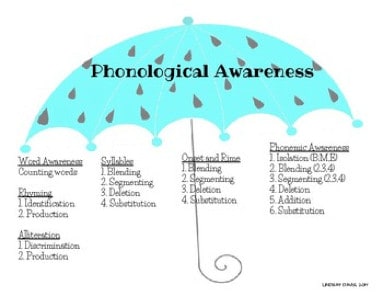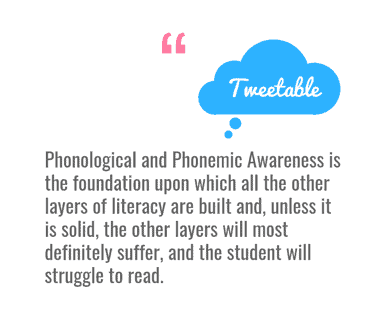Written by Elizabeth Clarkson, Ed.D
Reading is one of the most powerful tools in education. It is of the utmost importance that teachers are informed and comfortable with these categories and skills so they can offer the proper support and instruction along the way.
Some of us have very clear memories of learning to read. We remember sitting with a particular person, a teacher, parent, or older sibling. We struggled with tricky words, trying to apply what we knew about long /e/ and /ph/. We puzzled over the unfamiliar vocabulary word, knowing that it held the power to unlock the meaning of the paragraph. We smiled in triumph and experienced that rush of satisfaction when we turned the last page and realized we read that book, ALL BY OURSELVES!
Others of us feel like we’ve been readers our whole lives. It didn’t happen in bits and pieces. We don’t have individual memories of specific learning moments. It feels like we woke up one day and picked up a book, confident we could read it. You might be asking yourself, “Wait a minute! I don’t remember these topics in school. Nbeo one talked to me about ‘Systematic Phonics Instruction’. I just learned to read!” Learning to read is such a complex process that the journey itself is not straightforward and it looks different for all children.
Regardless of how we remember the process of learning to read, there are specific categories and skills that must be mastered along the way. In this blog, we’ll introduce The Big 5: the 5 essential reading components. Then we’ll focus on the first component, Phonemic Awareness, and look at what comes BEFORE that. We’ll talk about the importance of phonological awareness and its role in future successful phonemic instruction and reading.
Teachers of young readers, particularly those of PreK-3rd grade students, know that all children experience the reading process differently and at their own unique pace and sequence. Reading is the ability to understand the meaning of words that another person has written down and to use that information to make sense of the world around us.
Background: In 1997 Congress asked the National Institute of Child Health and Development to partner with the U.S. Department of Education. Together they established a National Reading Panel; their mission was to “evaluate existing research and evidence to find the best ways of teaching children to read.” Through a review of all available research, public hearings, and extensive analysis, the National Reading Panel's conclusion laid out an understanding and foundation of reading that still provides educators with a roadmap to teaching children to read. They concluded that there were five essential components to reading, known as “The Big Five:”
 Explicit instruction in Phonemic Awareness
Explicit instruction in Phonemic Awareness- Systematic Phonics Instruction
- Techniques to improve Fluency
- Vocabulary Development
- Reading Comprehension
From an early childhood lens, this reading journey begins before formal Kindergarten and includes a broader umbrella set of skills known as phonological awareness.
Phonological awareness: The ability to recognize and manipulate the sound properties of spoken words, such as syllables, initial sounds, rhyming parts, and phonemes.
 Imagine phonological awareness like an umbrella and under that umbrella there are several other skills, with phonemic awareness being one of them. Orton Gillingham organized and named these different pieces as:
Imagine phonological awareness like an umbrella and under that umbrella there are several other skills, with phonemic awareness being one of them. Orton Gillingham organized and named these different pieces as:
- Words: the ability to hear and repeat whole words, as opposed to parts of words (syllables)
- Rhyme: words that have a similar ending sound
- Alliteration: words that have the same beginning sound
- Syllables: a word, or a part of a word with one vowel sound
- Onset and Rime: the names of parts of a word
- Phonemic Awareness: letter sounds
1st Essential Reading Skill: Phonemic Awareness
Phonemic awareness: The ability to notice, think about, and work with the individual sounds (phonemes) in spoken words. Reading Rockets.org offers this graphic as a visual of the growing complexity of these skills.

Phonemic awareness is the most sophisticated phonological awareness and usually the last to develop in that category. This particular skill is specific to a child’s ability to recognize individual sounds that make up words (letter and phonemes sounds). As you may notice, these skills don’t even involve written print!
2nd Essential Reading Skill:
 Phonetics and Word Study: The ability to understand that sounds in spoken words relate to the patterns of letters in written words. Children who cannot hear and work with the phonemes of spoken words will struggle to relate these phoneme sounds to printed letters when they see them in written words.
Phonetics and Word Study: The ability to understand that sounds in spoken words relate to the patterns of letters in written words. Children who cannot hear and work with the phonemes of spoken words will struggle to relate these phoneme sounds to printed letters when they see them in written words.
As you can see, there are several skills and components that come before phonemic awareness. These foundational skills are so important that Orton Gillingham cites difficulties in phonological and phonemic awareness as the most common cause of poor reading.
On an exciting note, there is a multitude of literature, support, and ongoing conversation on the topic of phonological awareness and how to introduce engaging and developmentally appropriate activities into classrooms. To start your thinking on the topic, here are a few Classroom Strategies and Tips for Parents from readingrockets.org. A quick Google search offers many more options, as well! The important thing to remember is to create a supportive and active learning environment for children to practice these skills through fun and creative games.
There are also countless quality early educators, early elementary teachers, and learning specialists devoted to the ultimate goal of supporting children in becoming lifelong readers. As all good teachers know, some children need explicit instruction, others need more time to process and puzzle over the pieces themselves, while others just seem to pick up a book one day and read. All these combinations are a normal and natural part of the learning process. True, not everyone remembers the same steps along their reading journey, but seeing that smile of absolute joy when a child feels like “I’m a reader” is powerful for both that child and adults around them. We encourage all educators of young readers to continue their own learning into how they can support children along their reading process.
 Dr. Elizabeth Clarkson began her career in North Carolina public schools. After living in several other countries, she now considers North Carolina her home again. She has worked as a teacher, literacy coach, and principal in public and private schools in the United States, Ecuador, and Brazil. She combines her experiences in schools and nonprofit education to view all education conversations within the larger context of community, its values, and influences. She continues to draw from her experiences in academic coaching and international living to support schools in developing strong curriculum processes that support their unique values and identities.
Dr. Elizabeth Clarkson began her career in North Carolina public schools. After living in several other countries, she now considers North Carolina her home again. She has worked as a teacher, literacy coach, and principal in public and private schools in the United States, Ecuador, and Brazil. She combines her experiences in schools and nonprofit education to view all education conversations within the larger context of community, its values, and influences. She continues to draw from her experiences in academic coaching and international living to support schools in developing strong curriculum processes that support their unique values and identities.

